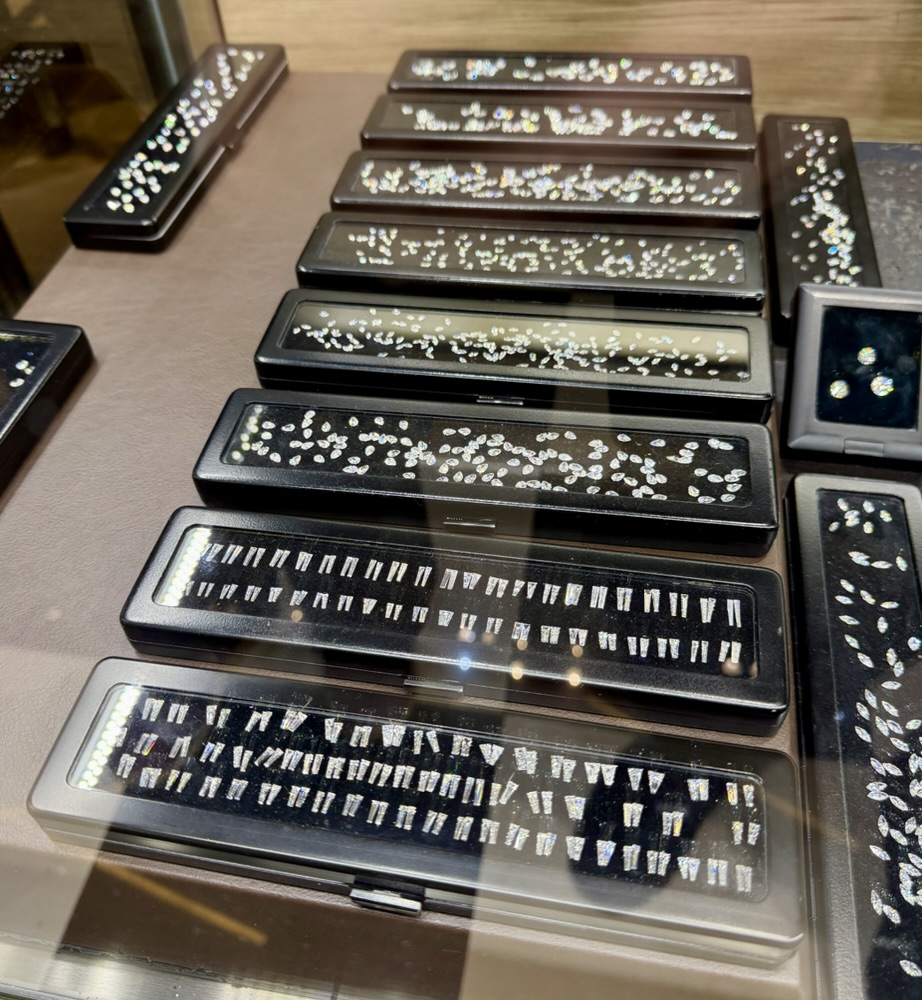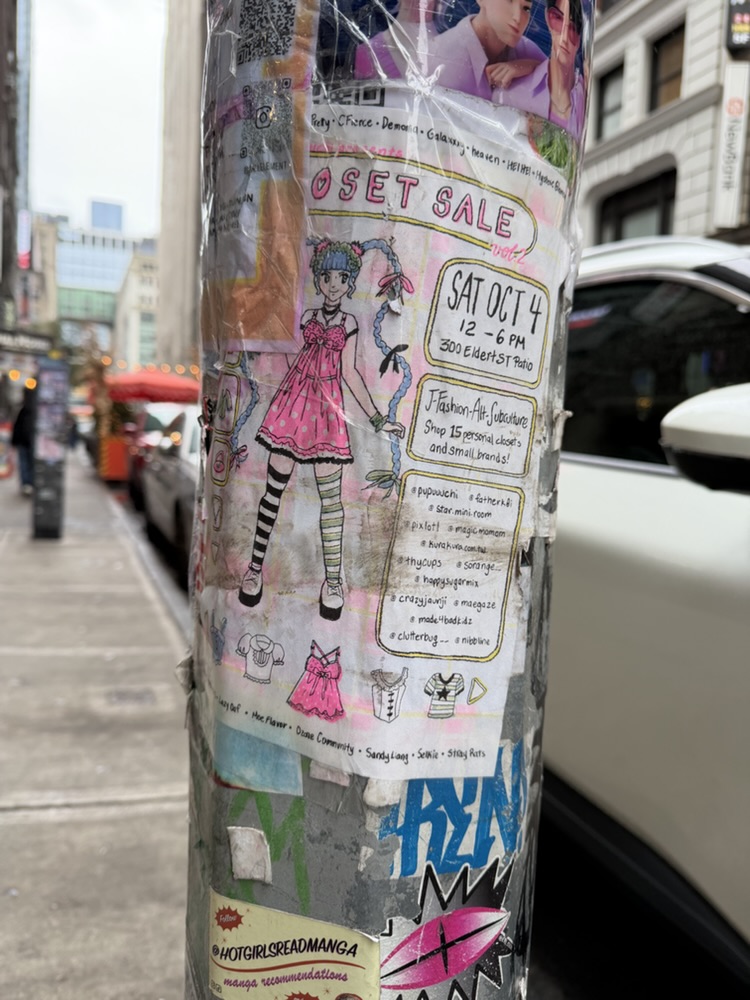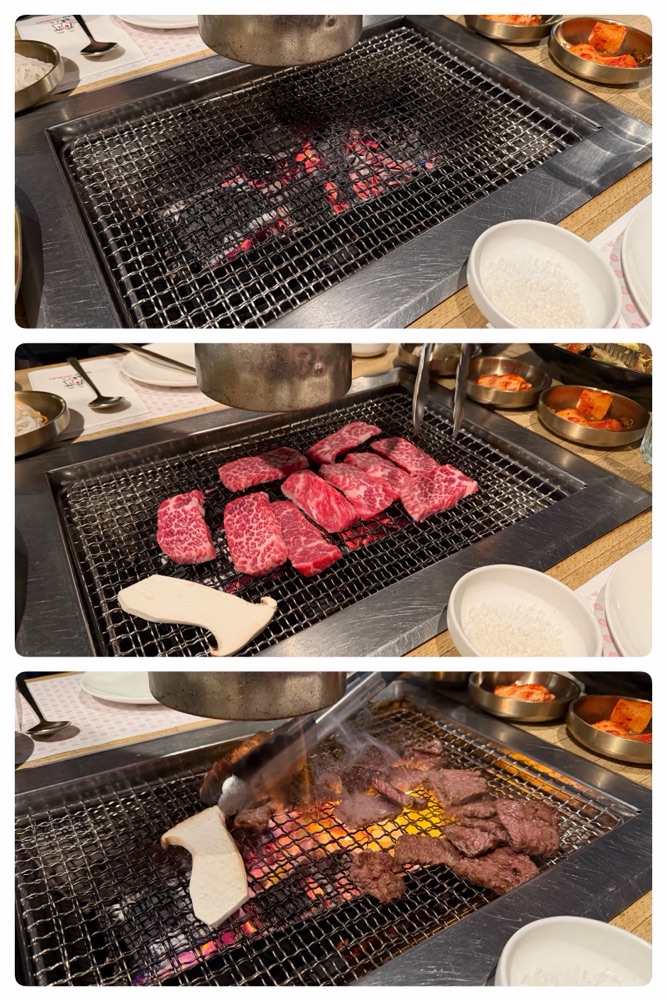We were both exhausted after two very full days. So naturally we woke at 5:30 for breakfast and the place we walked to (on dark, cold and wet streets) wasn’t even open! We returned to the hotel and got room service 🙂

The annual Columbus Day parade was scheduled for today but canceled due to the state of emergency (the rain has caused some flooding). I imagine many were in the city for the parade and hit the streets anyway. So even in the rain, the crowds were thick.

Look at that giant stuffed cat! This was on 5th Avenue where the rich people tourists shop, but I’m sure the cat itself wasn’t for sale 🙂

We visited the ‘diamond district’, which is a block of shops specializing in gemstones, luxury watches and jewelery. Rather than discrete shops, it’s an abundance of arcades each containing dozens of tiny shops on multiple levels. Apparently it’s the densest retail space in America with almost 4000 vendors in a single city block!

We saw some fabulously expensive items for sale. Many stands had large selections of Rolex watches for instance, and I asked the price of one and it was $16,500. Kristin liked a Tiffany bracelet at another vendor and it was a mere $175,000! There were also loads of diamond sellers and you could buy loose stones of any size, colour and cut. We saw loose diamonds costing over $20,000 and those were just the ones with price tags! Fascinating stuff and worth a window-shop if you’re ever in the city.

By now we were close to knackered, and it was time for a last visit to the Japanese snack shops before heading for the train station. I took the chance to buy more turkey Cheetos and cotton candy, and as we headed to the station I doubt there was space in our luggage to stash anything else!

If you wonder about all this shopping, every time we go to the city we find more shops, and this is especially true in the vicinity of ‘Koreatown’. We used to be able to do ‘our rounds’ in a single (very busy) day but that’s not feasible now. Hence the two days of shopping!

Oh and KLS got coffee made by a robot that printed a photo onto the foam! As you can see we had the robot make her a Zoffy coffee using one of our photos.
Another successful NYC trip has ended, and as usual we’ll need a day or two to recover. 70k steps in 3 days isn’t as easy as it used to be!










